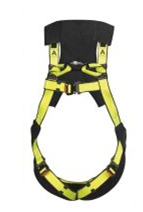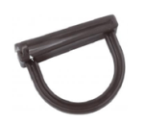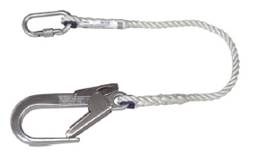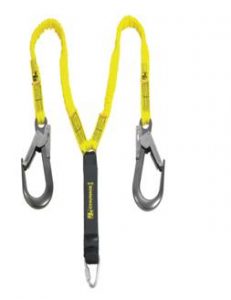

General
When working at height, measures must be taken to prevent falls. If it is not possible to prevent falling hazards by taking measures at the source, or collective measures such as handrails, personal fall protection must be worn.
Fall protection means a safety harness in combination with a lanyard and a shock absorber. The safety harness is attached to a suitable anchorage or a horizontally-tensioned safety line (Latchway) via a lanyard with a carabiner or other connector. The lanyard is either a retractable or double line model. Users of personal fall protection must receive training.
Safety harness
A safety harness in combination with a lanyard and a shock absorber helps distribute shocks throughout the wearer’s body. After a fall, the harness must be disposed of.
Two lanyard breakaway parking points can be fitted to the harness for connecting the 2nd snap hook. The advantage is that these break loose if you get tangled.
Attaching two relief steps on the left and right of the harness is recommended to minimise the risk of parts of the wearer’s body being crushed while hanging in a harness after a fall.
 |
 |
| Safety harness | Lanyard breakaway parking point |
Lanyards
The lanyard connected to the harness must be no longer than 2 metres. In order to absorb falls and momentum, harnesses must be fitted with shock absorbers. A second lifeline must always be worn so that people can pass each other safely.
It is preferable to use a retractable lanyard when working at height. A retractable lanyard works just like a seatbelt, and arrests your fall. If a retractable lanyard is used, a short light positioning line can be used as a second lifeline. If you do not use a retractable lanyard, you must use a double lanyard.
|
|
|
|
| Retractable line | Positioning line | Double lanyard |


